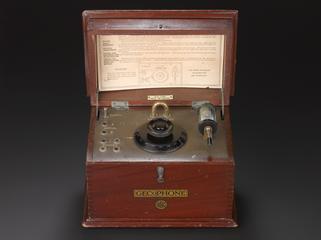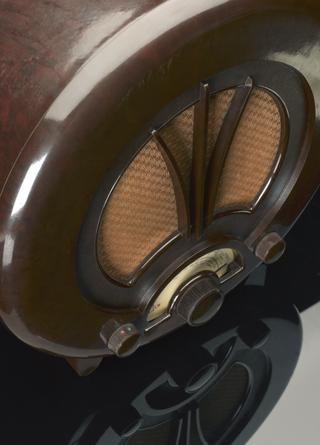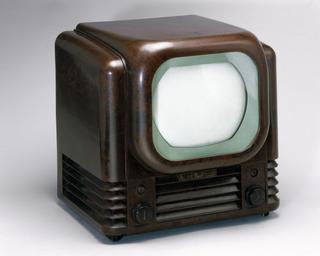
Marconi coherer and Admiralty pattern decoherer, 1900-1910
- Made:
- 1900-1910 in United Kingdom












Marconi coherer and Admiralty pattern decoherer, unknown maker, British, 1900-1910
The coherer was the first practical device for detecting Hertzian waves. Its most familiar form was a tube containing metal filings or turnings loosely packed between metal plugs. This presented a high resistance to current but changed to low resistance in the presence of electric waves because the filings 'cohered' or stuck together. In order to restore the high-resistance state the tube needed to be given a mechanical tap or jolt. Filings coherers were fitted with clockwork or other arrangements for driving a 'tapper' to provide continual mechanical agitation. Marconi brought the coherer to its most efficient form and it was used with receiving sets in wireless telegraphy equipment used by the Royal Navy.
Details
- Category:
- Radio Communication
- Object Number:
- 1923-396
- Materials:
- ebonite, brass (copper, zinc alloy), plastic (unidentified), wood (unidentified), steel (metal), copper (alloy), glass and paint
- Measurements:
-
overall: 115 mm x 100 mm x 170 mm, 1.07 kg
- type:
- coherer
- credit:
- Donated by M Child




